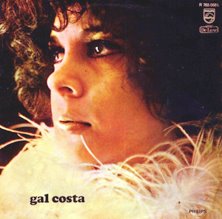On Writing about Atrocity.
I don’t always agree with Michiko Kakutani, but I think she nails exactly what goes wrong when writers tackle the unthinkable, in today’s review of Jonathan Littel’s The Kindly Ones, the Nazi novel that was a sensation in France, given its first person narrative of an unrepentant Officer:
Indeed, the nearly 1,000-page-long novel reads as if the memoirs of the Auschwitz commandant Rudolf Höss had been rewritten by a bad imitator of Genet and de Sade, or by the warped narrator of Bret Easton Ellis’s “American Psycho,” after repeated viewings of “The Night Porter” and “The Damned.”
Whereas the philosopher Theodor Adorno warned, not long after the war, of the dangers of making art out of the Holocaust (“through aesthetic principles or stylization,” he contended, “the unimaginable ordeal” is “transfigured and stripped of some of its horror and with this, injustice is already done to the victims”), whereas George Steiner once wrote of Auschwitz that “in the presence of certain realities art is trivial or impertinent,” we have now reached the point where a 900-plus page portrait of a psychopathic Nazi, dwelling in histrionic detail on the barbarities of the camps, should be acclaimed by Le Monde as “a staggering triumph.”
The biggest problem faced by the writer of atrocity is his own talent, that his highest aesthetic value becomes his lowest weakness. By transforming atrocity into art, atrocity is no longer atrocious. There are two ways this can happen: by not dwelling enough on the horror, or dwelling way too much. The former allows the reader either through the beauty (or vagueness) of the prose to sidestep any punishment for being a voyeur. The latter runs the risk of turning into pornography, atrocity smut that numbs instead of outrages.
Of course having just published a novel about an atrocity, I worry about mixing art and horror myself; not just how successful I was but was exactly does that success mean. Does even calling a novel about the holocaust a success result in a kind of glibness? Art taking the place of fact, so much so that people run the risk of looking at the holocaust through Stephen Spielberg’s incredibly artful lenses, and not the actual event? Life is Beautiful has aged horribly because of this very thing, Roberto Benigni turning a concentration camp into a world of wonder, despite having a slight justification for it (in the story, at least).
What happens when a beautiful technique captures horror? VS Naipaul, in his perceptive and damning Middle Passage, once said that a Jamaican slum was a place of such unremitting ugliness that one could never take a photograph of it because the beauty of the photographic process lies to you about how ugly everything is. I saw this in my former job as a location scout: foreign photographers jumping at the chance to shoot in the ghetto, not because they wanted to capture poverty, but because rusted zinc gave such a wonderful brick red colour.
I’m in a reading group about violence and one of the crucial issues we have to tackle is the very existence of such a group. If this study has no plan for concrete action, some form of sacrificial giving to a cause that betters us all, aren’t we just making our own torture porn? We run the risk of reducing violence to a mere aesthetic or intellectual experience, that way a Photograph’s beauty can rob a tragedy of its horror. The only artist I know who may have fully figured this out, balancing beauty and tragedy in a way the highlights the tragedy of the subject, while saving beauty for the dignity of the victim was the gifted photographer Dan Eldon. Of course he paid for his commitment to truth in art with his life.
skip to main |
skip to sidebar




CHEEVER, A LIFE, by Blake Bailey: Engrossing, maddening, funny but also unbearably sad, Cheever's greatest work of fiction may have been himself

In Hazard, by Richard Hughes
-image007.jpg)
GAL COSTA. You get the feeling that the tropicalia subversives were really trying to make a hit with this one, and it's all the better for it. Beck would have to become a scientologist to make this...er...wait a minute....


As Of The Writing I, Marlon James
- Marlon James
- Minneapolis/ St. Paul, United States
John Crow's Devil Paperback UK

John Crow's Devil Paperback USA

READING RIGHT NOW...
CHEEVER, A LIFE, by Blake Bailey: Engrossing, maddening, funny but also unbearably sad, Cheever's greatest work of fiction may have been himself
Reading Right Now...

In Hazard, by Richard Hughes
Books Of the Moment
- American Rust, by Phillip Meyer
- The Liar's Club, by Mary Karr
- The Forever War, by Dexter Filkins
- Sacred Violence, by Paul W. Kahn
- The Pilgrim Hawk, by Glenway Wescott
Rocking My World
-image007.jpg)
GAL COSTA. You get the feeling that the tropicalia subversives were really trying to make a hit with this one, and it's all the better for it. Beck would have to become a scientologist to make this...er...wait a minute....
Other Sonic Obsessions - Hiphop Bebop Don't Stop

- Beastie Boys - Paul's Boutique
- A tribe Called Qwest - The Low End Theory
- A Tribe Called Quest - Peoples Instinctive Travels...
- KMD - Black Bastards
- De La Soul Is Dead
- Mad Villian - Mad Villainy
- Stereo MC's - DJ Kicks
- Miles Davis - Sorcerer
- John Coltrane - Live In Paris


